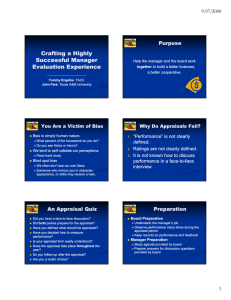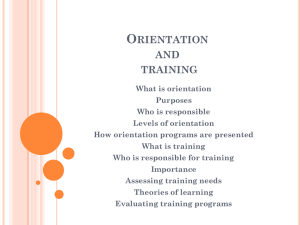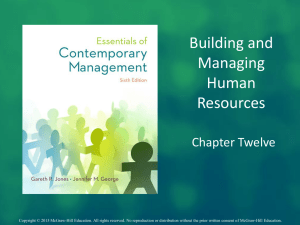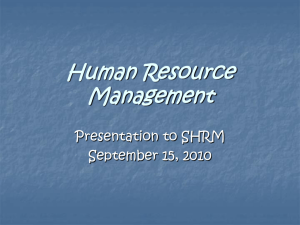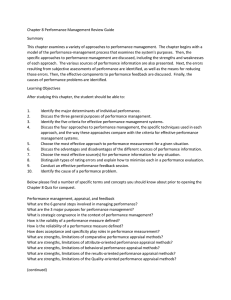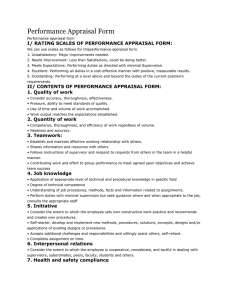Performance Development Tool
advertisement
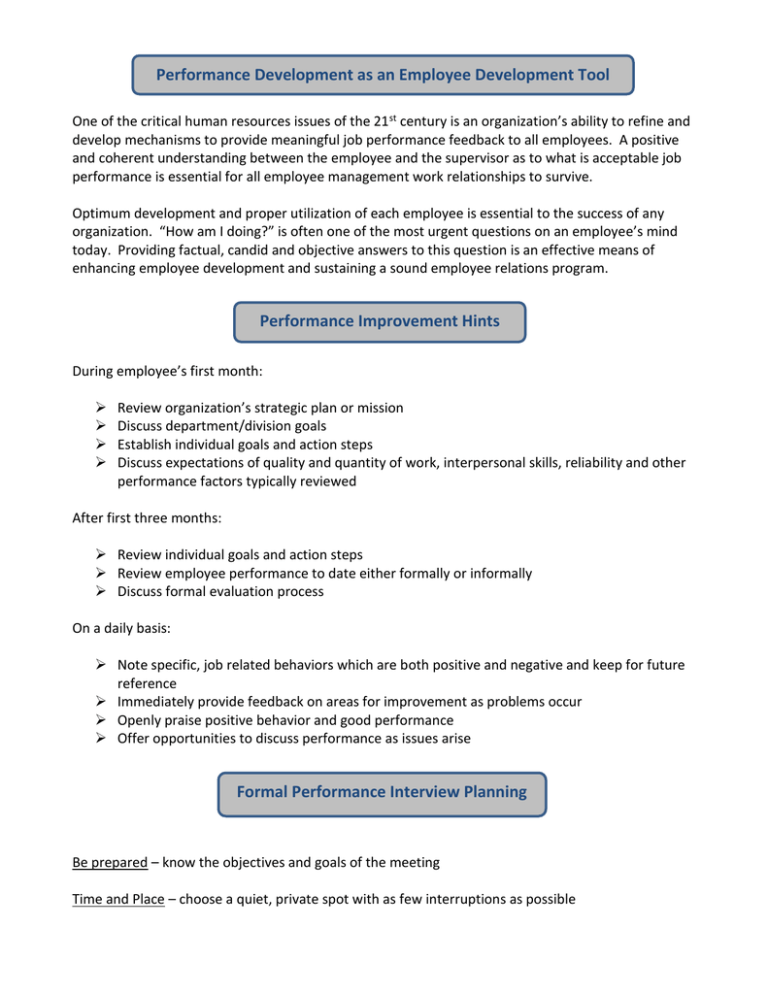
Performance Development as an Employee Development Tool One of the critical human resources issues of the 21st century is an organization’s ability to refine and develop mechanisms to provide meaningful job performance feedback to all employees. A positive and coherent understanding between the employee and the supervisor as to what is acceptable job performance is essential for all employee management work relationships to survive. Optimum development and proper utilization of each employee is essential to the success of any organization. “How am I doing?” is often one of the most urgent questions on an employee’s mind today. Providing factual, candid and objective answers to this question is an effective means of enhancing employee development and sustaining a sound employee relations program. Performance Improvement Hints During employee’s first month: Review organization’s strategic plan or mission Discuss department/division goals Establish individual goals and action steps Discuss expectations of quality and quantity of work, interpersonal skills, reliability and other performance factors typically reviewed After first three months: Review individual goals and action steps Review employee performance to date either formally or informally Discuss formal evaluation process On a daily basis: Note specific, job related behaviors which are both positive and negative and keep for future reference Immediately provide feedback on areas for improvement as problems occur Openly praise positive behavior and good performance Offer opportunities to discuss performance as issues arise Formal Performance Interview Planning Be prepared – know the objectives and goals of the meeting Time and Place – choose a quiet, private spot with as few interruptions as possible Conducting the interview: Create a positive environment and help the employee feel at ease Give balanced feedback, both positive and negative, but start with the positive Focus on the job, not the person Ask questions and allow the employee to provide feedback When discussing areas for improvement, discuss methods and objectives for improving Discuss possibilities for advancement, the employee’s aspirations and professional development necessary to be a candidate for such future positions Conclusion: Summarize and review the important points of the discussion Restate the action steps that have been recommended and provide a time frame for completion Make sure employee reviews the appraisal and provides comments Have employee sign it to acknowledge that he or she has read it (does not have to agree with the content) Follow-up: Follow-up with the employee to see how plans are proceeding within the given time frames Offer the employee assistance in achieving objectives and encourage discussion of successes and obstacles Pitfalls to Avoid When Appraising an Employee Don’t focus on one specific incident – review the entire period that the appraisal covers. Don’t go solely by memory – base the review on accurate dates and facts. Avoid the “halo” and “horns” effects. Just because the employee performs poorly in one area does not make his/her overall performance bad. Just because an employee excels in one area does not make his/her overall performance excellent. Length of service or job grade does not necessarily mean better performance. o Look carefully at the individual’s performance within that job. Avoid bias about an employee based on past performance. o Look at the current period Don’t overrate a poor performer as a motivational tool. Not all individuals are the same. o Analyze each employee carefully; establish performance ranking. Don’t rush through the appraisal. o Take time to record accurate information that truly reflects the individual’s performance Don’t be afraid to provide truthful information. Pardue, Howard, Ph.D. SHRM online Information Center and Library SHRM (Society for Human Resource Management) online Information Center and Library
